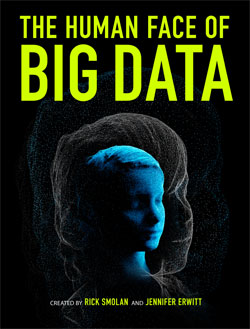Walk down a street in midtown Manhattan and there’s a very good chance you’re being followed, even in broad daylight. Not by a human being, necessarily – but by closed circuit TV cameras that are beaming your image, your movements and your location to screens and computers and software systems studied by untold numbers of law enforcement authorities.
It’s all part of today’s data and knowledge revolution and its nearly infinite applications. Today, 3,000 closed-circuit TV cameras capture a steady flow of real-time images of millions of lower and midtown Manhattan residents, workers, shop owners, tourists and others as they go about their daily lives and business in the Big Apple.
The $40-million-dollar Domain Awareness System (DAS), developed jointly by the NYPD and Microsoft, uses sophisticated analytics as a counterterrorism and policing tool. The initiative was announced last August by Mayor Michael Bloomberg and Police Commissioner Ray Kelly as part of a broad effort to combat potential threats and criminal activity in Manhattan – allowing law enforcement – eleven years after 9/11 – to instantly access the footage and information they need.
The system includes “license plate readers, radiation detectors, relevant 911 calls, arrest records, related crimes, and a vast file of other valuable data on [personal] characteristics such as tattoos, body marks, teeth and even limps,” write Rick Smolan and Jennifer Erwitt in their book, The Human Face of Big Data.
The system can also track suspicious vehicles back through time to the multiple locations they occupied in previous days and weeks.
The effort compliments New York’s Real Time Crime Center, which launched in 2005 and features a 500-square-foot screen displaying data processed from police work across the city. “It’s one-stop shopping for investigators,” Ray Kelly has said of the new DAS technology. “It’s a tremendous amount of information that’s available, and it’s available quickly.”
As NYC’s vast network of cameras, sensors and data guide and inform police action – allowing investigators to map criminal history in order to display crime patterns some people spooked. Chants of “Big Brother is watching” have popped up in all sorts of places.
Big Data – encompassing governments, economies, health care, business and much more – has some people biting their nails in dread over privacy concerns even as they acknowledge that technological promise almost always comes with peril.
Dan Gardner, author of Future Babble: Why Expert Predictions Fail and Why We Believe Them Anyway, says, “In this ocean of data is a frighteningly complete picture of you. Where you live, where you go, what you buy. What you say. What you feel and believe. It’s all there. With access to even a small portion of that data, corporations and governments can know far more about you than you might wish them to know.”
In an essay in the Smolan-Erwitt book, he adds that “strict regulatory control to protect privacy may be enough to keep Big Data from becoming Big Brother. Or it may be futile – and we will have to adjust to living in [this] world.”

But Deborah C. Peel, a physician and founder of Patient Privacy Rights, a health privacy watchdog agency in Austin, Texas, isn’t so sanguine. She believes that in an age of electronic health records, privacy issues are paramount. She says the only “true beneficiaries of big data as it is currently managed are the organizations selling and mining the information.”
“We actually don’t know anything about who holds our data and what they’re doing with it,” she told The Fiscal Times.“It’s a big mess. We don’t have a chain of custody for our data. We have no assurance that anyone is doing what they say they’re doing with our data. It’s basically a giant, black hole.”
It’s why she’s been working on securing funding for the Data Map Project, together with Latanya Sweeney, a professor of government and technology at Harvard who founded the Data Privacy Lab there. “We’re enlisting citizens to become detectives to fill in all of the many places they can know and validate to provide proof of data flows that we don’t even know about,” says Peel.
As one example: Hospitals typically use dozens of different software programs to store patients’ personal data – and “each of those software vendors has a contract with the hospital, which may allow a vendor to use, own or sell patient data.” But what are those who buy our information doing with it? “We don’t always know. Pharmacies have been selling our prescription information every day for years,” to drug companies, insurance companies and others. “Yet there are other situations where it’s not clear,” she says.
The erosion of individual privacy in a data-driven world is “a critical issue,” she believes. In response to a recent New York Times’ op-ed by Bill Keller, “Invasion of the Data Snatchers,” which discussed a controversial “gun owners’ map” recently published by the Westchester N.Y.-based Journal News – Peel said, “We have to make sure we establish clear boundaries and give people a say in ways in which their information is accessed and used, particularly when it comes to sensitive data like personal health information.”
Outside of the advocacy groups, others worry as well. As enthusiastic as Rick Smolan is about the numerous ways in which Big Data can improve our world the co-creator of the Big Data package also hints at threats. “Like all new tools, Big Data carries the potential for unintended consequences,” he says.
And Marc Goodman, a global security expert and founder of the Future Crimes Institute, comes at this from a lifetime spent fighting bad guys. He says emerging technologies “will inevitably make their way to criminals and terrorists – and what they’ll do with them may deliver a very different future than the one most of us hope for.”
Well beyond the world of hackers, he says, drug-running narcos “are not only using the latest smartphones but are actually building their own encrypted radio networks in all 31 states of [Mexico]. The fact that drug dealers soon may have better mobile phone coverage in Oaxaca than I do in Silicon Valley gives me pause.”
Goodman adds that Mexican citizens, “at great risk to themselves, are crowdmapping the locations and activities of drug dealers.”
The uses and applications of Big Data clearly go both ways.
We can be empowered “with knowledge, products and services that will make our lives measurably better,” says Goodman in his essay in The Human Face of Big Data. “But as we enjoy these fruits, we should not forget that Big Data has the power to arm the bad guys as well…. If the good guys are to prevail, we need to be diligent in our use of Big Data and work together to create the techno-utopia we all hope for.”
This is the sixth in a series of articles about the ability of Big Data to change lives, economies, governments and much more, as captured by Rick Smolan and Jennifer Erwitt in The Human Face of Big Data. Read more about their project here.





